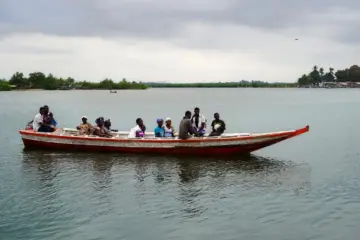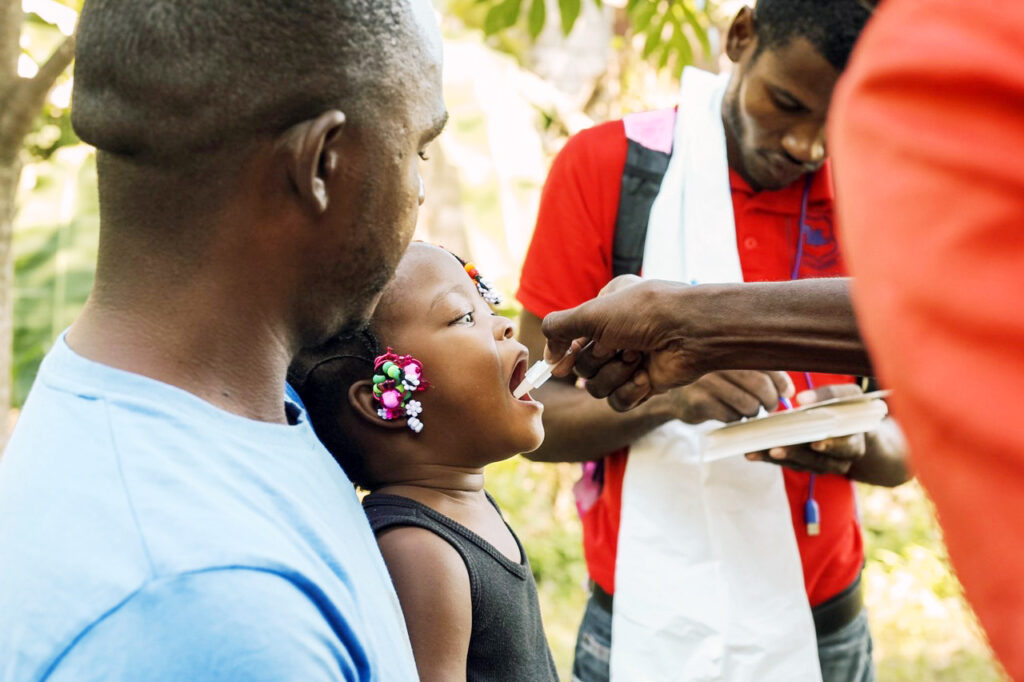Q&A: Dr. Paul Farmer on His New Book: Fevers, Feuds, and Diamonds
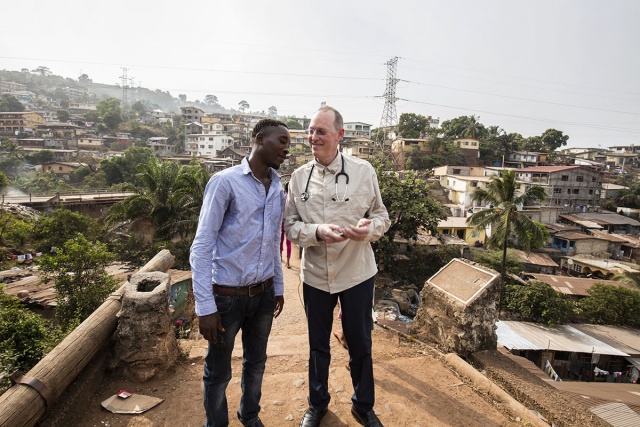
PIH co-founder talks about Ebola’s effects in West Africa, offers lessons for COVID-19 times

In November 2014, Partners In Health Co-founder and Chief Strategist Dr. Paul Farmer was in Freetown, Sierra Leone, breaking bread with a group of Ebola survivors as the world’s largest epidemic of the virus raged across the country.
“It was the night I met Ibrahim,” Farmer recalled, referring to one of the survivors. “We started talking and he told me he’d lost 23 members of his family to Ebola. I was shocked into silence. And what he said next was: ‘I’d like you to interview me about my experience.’”
“I’ve been an anthropologist as long as I’ve been a doctor, and it’s very rare that someone says that,” Farmer continued. “I thought, ‘If I’m going to interview him about such an awful experience, it better be for someone other than just myself.’”
That, Farmer said, is when he decided to write a book.
Fevers, Feuds, and Diamonds: Ebola and the Ravages of History was released on November 17 and details the Ebola outbreak’s origins and aftermath; the stories of patients, clinicians, and caregivers; the international response; Farmer’s own memories from Ebola treatment units; and the historical chapters underpinning it all.
And in a book about a historic epidemic, published during a historic pandemic, Farmer writes about where we go from here, in the thick of COVID-19 and ongoing, extreme health inequities across the world.
“I think the big story,” Farmer said, “is that we have to keep pushing forward health system strengthening, whether we’re talking about Sierra Leone or the United States.”
In the interview below, Farmer provides an inside look at the book and talks about grief, joy, history, and the role of proximity in global health.
This is an expansive work—you take us through the 2014 crisis as well as an in-depth history of West Africa. And perhaps one of the most moving parts of the book is personal accounts you share of Sierra Leonean Ebola survivors. Can you tell us about the process of constructing this narrative?
Writing is a solitary endeavour, right? But you can make it a bit more social. And for this book, it had to be a social process. Of course, very saliently, I was writing with the people whose stories and history are told here. They all had knowledge that was unfamiliar to me, and I just decided that every time one of them said something that triggered that tingly feeling of unfamiliarity, I would make it my business to learn more. When I heard something I didn’t understand—which was all the time, every day—into my notebook it went.
One of the things I wanted to do was to read (with Bailor Barrie’s help) parts of this book to Ibrahim, Yabom, Chairman—all of these people in the book—and see if I was getting it right. They understood that they should interrupt me, correct me, explain where I’d gone off on a false track. That was an emotionally rich if sometimes painful way to write. I learned a lot with them.
People will learn many people’s stories when they read the book. But can you give everyone a preview of some of these stories? You dedicate two full chapters to Ibrahim and Yabom, both of whom survived Ebola.
Ibrahim was 26 when he got sick. He was working as a motor taxi driver, and everything kind of hit his family at once, in the summer of 2014. His mother’s side of the family, and his mom, were felled, root and branch. But the thing that I wanted to underline in telling his story was his desire to help other people. I was just getting to know Ibrahim when he met Mariatu, a young girl who was really still dying of Ebola, even though her bloodstream had no evidence of ongoing infection. He worked with her and her father and others as an accompagnateur, someone helping address the social needs and provide support—psychological and material.
I find Ibrahim to be a wonderful, engaging, thoughtful person. Others may have found his experience ordinary, but they would’ve had to have been Sierra Leoneans if they felt that way. I mean, the guy survives Ebola and most of his family does not. And like all of our adult patients, he also survives a war, during which his father and other relatives died.
Yabom, who was 38 when she narrowly survived Ebola, had just lost a dozen family members, including her husband and children. Her story was an important part of West African history. When she, over the course of almost three years, shared this story with me, there were all kinds of indications that it was important. Not just because everybody’s story is important, but because she survived, with enormous losses, Ebola and a brutal civil war that disrupted all of West Africa. And because she is a rural woman, mom, daughter, sister—I mean, if you don’t have a gendered perspective on caregiving, you’re not going to learn a lot about caregiving.
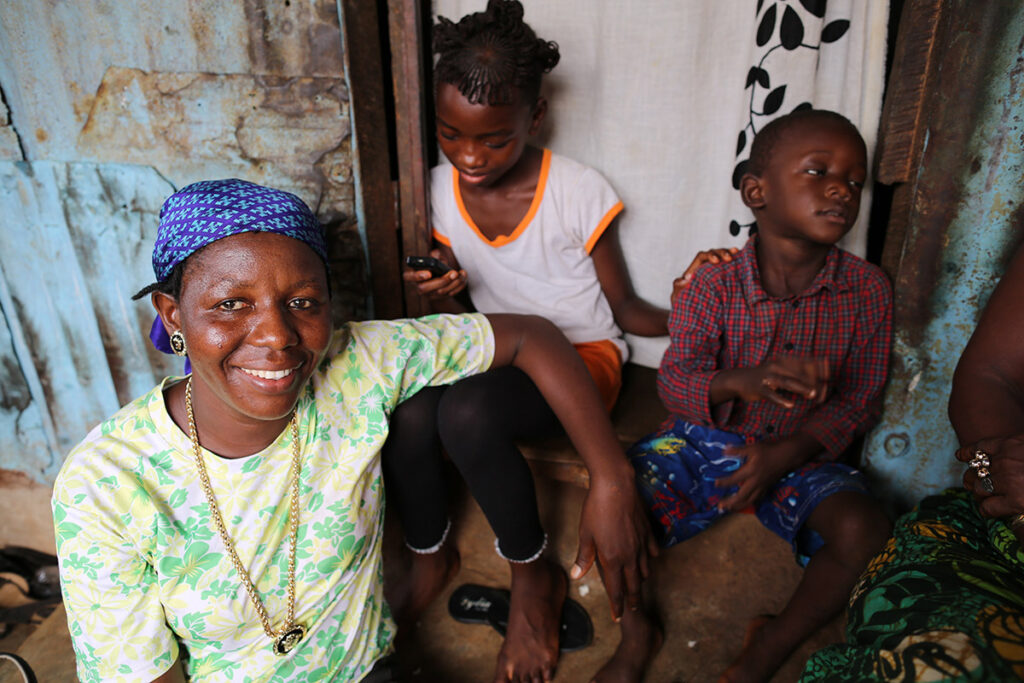
What is it like to collect these personal histories?
I usually have a very hard time with it. I find hearing these stories more brutal than uplifting, at least at first. It’s amazing to some people to hear that, because I write about human suffering all the time. But there were days when I found it easier to work in Ebola-ridden Port Loko Government Hospital than to talk to Yabom about when her husband and children died. I remember putting off that discussion for months, maybe a year. It was hard for her and hard for me. I’m not confused about who’s who here—who lost family to Ebola and who did not—but it’s tough material.
I realized that I was getting to know her husband who had died of Ebola. I’d never met him, of course. But after about two years of hearing about him, I realized that I actually missed him. That said to me that I’d scaled that empathy wall and was feeling things that I would never have felt without spending a lot of time talking to Yabom and learning about her family and her experience. And if you can convey how much she and her husband cared about each other and how much they survived together before Ebola, I can’t imagine that somebody else can’t scale that empathy wall.
You write in the book that grief was “a subject obliterated from much expert discourse during the first month of the epidemic, when many pontificated about ‘local beliefs’ about sickness, death, burial, funerary ritual, and the afterlife.” Can you talk about the role of grief in the epidemic—and why it was erased from so many narratives?
I’ll bet it has nothing to do with misanthropy, of not caring about other people’s grief. But when we start looking for the reasons that it was erased, obscured, or underplayed in reports from West Africa, think about the reporting and writing that happens in the middle of an outbreak. There’s no space in this short news cycle to have in-depth explorations—unless people do something remarkably good or remarkably bad, which results in a sort of social flattening. Grief and mourning are anything but flat.
I will be thrilled when Yabom and Ibrahim write their own autobiographies, and in the language that suits them since they both speak several. But in the interim, what I tried to do was unflatten them, give them a voice, and get their story down the way they wanted to tell it. And that involved exploring grief.
And there’s another, more psychological answer: These are very, very hard subjects, and it’s easier to talk about funerary rituals and who’s throwing cowrie shells or doing incantations or prayers or wrapping the body in a shroud.
Let’s talk about funerary rituals and all the stereotypes that were swirling about while the outbreak was happening. You point out that many people were examining the spread of Ebola through a lens of exoticization. How do you hope that the book adds nuance to blameful images associated with Ebola?
I have never not encountered this distorting interpretive grid. Go right through the list of places that PIH has worked, places I’ve seen and written about, and I’ve never not seen it.
One of the things that occurred to me was that, when my father died suddenly at 49, our traditional funerary ritual included laying out his body in a suit and kissing him on the brow. In discussions of Ebola, this sort of ritual was rendered as cultural insanity: Why would anyone waste time attending to the burial of the dead in the middle of such a catastrophic epidemic?
The answer is: Because we always do that. We always care about our families and friends. Humans do that. And what is the last act of caregiving if not burial of the dead? What so many were describing as bizarre and incomprehensible is not bizarre any more than it is incomprehensible.
So that was really my goal, to bring nuance through sharing lived experience as it was reported. And I don’t think that can fail you. Look right now at the division in the United States: Are we just going to say, of the other side, ‘There’s no way we can understand such cultural lunacy,’ or are we going to figure out what leads to these discrepant views of the world?
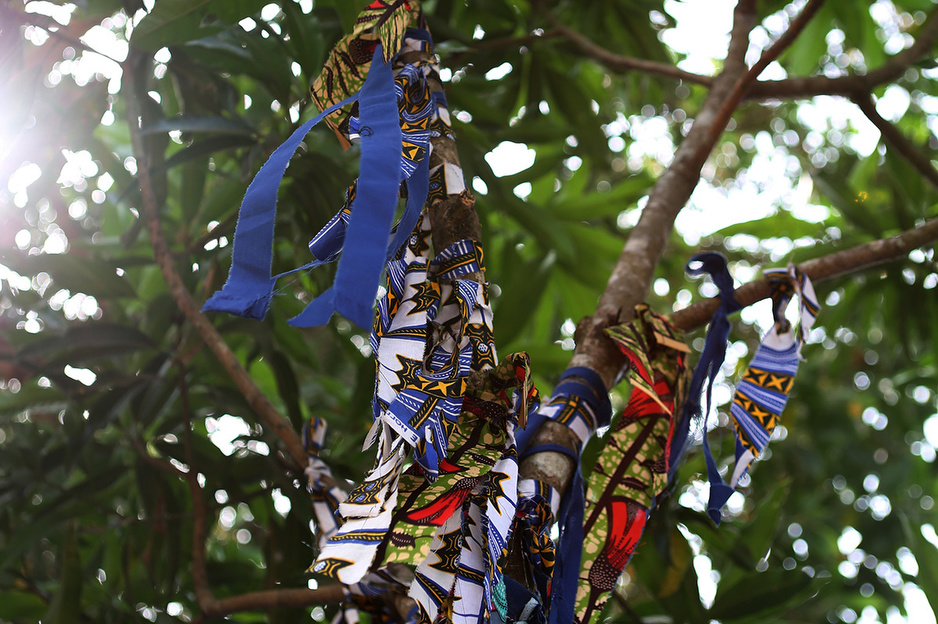
Speaking of the United States, I think it’s easy for many Americans to feel disconnected from the countries where PIH works, Sierra Leone included.
This book is all about revealing connections. How do you understand what is still convulsing our nation—what’s going on with COVID, or what happened to George Floyd, Breonna Taylor, Ahmaud Arbery, Tamir Rice—without understanding history? How do you understand American history without understanding the history of racism? How do you understand that history without understanding slavery?
Americans have intimate connections to the continent of Africa. So do Europe and South America. That history is the history of our world, of our social reality, current and past.
I was in Montgomery, Alabama, for the launch of the Equal Justice Initiative’s National Memorial for Peace and Justice and the Legacy Museum. I remember standing right near the office of Bryan Stevenson, the organization’s founder and a long-time PIH board member, and I could see the mighty Alabama River. I could see the former slave docks; they’re right by Bryan’s office. I’d thought about this history on every visit to EJI. But this time, because I’d already been working in Sierra Leone for a while, I thought about those ships departing from somewhere around Freetown or Bunce Island—the site of a major British slave trading post—and ending up in Montgomery. I’m happy for that little visual map, which came to me unbidden. I’m glad that there was some restoration of historical memory for me, and happier I can share it in this book. We can all have those little epiphanies.
This book is a pleasure to read, but is also very painful. Not just because the physical descriptions of Ebola are difficult to take in, but also because of the extent to which the virus forced people to make really unfair choices between their humanity and their health—holding their loved ones close, versus giving in to the very real threats of the virus. I wonder how you observed that, but also how you observed people leaning deeply into their wells of humanity and hope.
I saw much more of the latter. I was very moved by the work I saw and stories I heard. I was unhappy about the quality and purpose of the “international response,” which seemed to replicate colonial priorities of disease control over care. But the friendships we made are enduring gifts and a reflection of all that was beautiful during those times, when so many people really did try to look out for each other.
I struggled a lot with how many of the grisly details to include. And I knew for sure that I didn’t want anything gratuitous. There are many episodes that I removed because they were so graphic and didn’t add to that corpus of sentiments and enlightenment and wonderment I experienced and wanted to share with the reader.
I’m hoping people won’t mind that it’s a very difficult book emotionally, because there’s a great deal of proximity to suffering in these pages. But I really hope that the ultimate message is one of uplift.
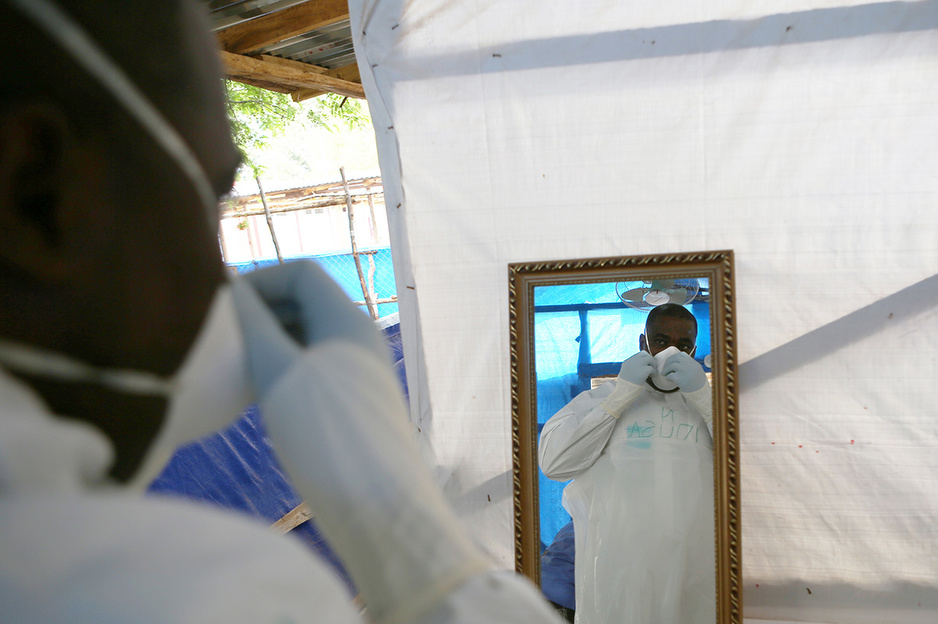
You’ve been a pioneer in the global health field for decades. How do you manage the emotional pendulum in this work between very real sadness and very real joy?
It’s very hard, but there are lots of reasons to allow yourself to be buffeted by those extremes. The most important one is because they are precisely the extremes that are our friends, patients, and co-workers have experienced directly.
I think those staffing the global health apparatus could stand to be more battered by sadness, in fact. It’s the bloodiness and bureaucratic nature of a lot of public health, the lack of proximity to patients, that probably spares the control-over-care paradigm from reform. Because people are just too distant from it. I don’t think of PIH as part of the public-health machinery so much as part of the global health equity machinery. Understanding equity and inequalities implies the obligation to understand context, to look back in time to understand how social history came to be.
Some people have a rich life of faith, others have distracting hobbies, others are doing such varied work that their sadness is leavened by a lot of satisfaction—like when the team in Sierra Leone gets the Maternal Center of Excellence up and running, you’ll be floating on that happiness, right? Years and tears later, I’m still happy about University Hospital in Haiti, still thrilled about Butaro Hospital in Rwanda, and the University of Global Health Equity next door.
All three of those things are meaningful to me: spiritual engagement, distracting hobbies—mine happens to be gardening—and that network of friends who stick together in this work long enough to see the progress and joy that invariably attends this work. It’s really more about joy and progress once you stick with it. If I go back to my hypothesis that a lot of people in global health could stand a little bit more sadness, it’s not that I wish sadness on them. But I wish the kind of passion that we have on all of them. And I think that, for most, passion comes from proximity.
You mentioned before the “control-over-care paradigm.” Can you share more about this idea?
Even when I was still a medical student, I found hard-core disease control unnerving—all of your attentions are focused on stopping spread of a pathogen without adequate attention and resources for treating people suffering from said pathogen.
Where in the world was the priority most reliably placed exclusively on disease control with little interest in the care afforded the natives? This paradigm came into being during colonial rule. Year in, year out, epidemic this and epidemic that, I could find some undercurrent that said: ‘Good, high-quality medical care is for us—not for you, Black people and brown people. We got disease control for you.’
With Ebola, people would misinterpret the international community’s response. They said, “Billions of dollars were put into Ebola care.” That’s bullshit. There weren’t billions of dollars put into Ebola care—if there were, we would have had similar case fatality rates to what we saw in Europe or in the United States.
We found plenty of people in the public health community saying, “It matters a great deal to me that people get better care.” But early on in the epidemic, the mediocrity of the quality of care was not raised militantly and persistently. And by the time these massive investments—which were a lot smaller than we were led to believe—were made, it was too late. The majority of purpose-built Ebola treatment units never saw any patients.
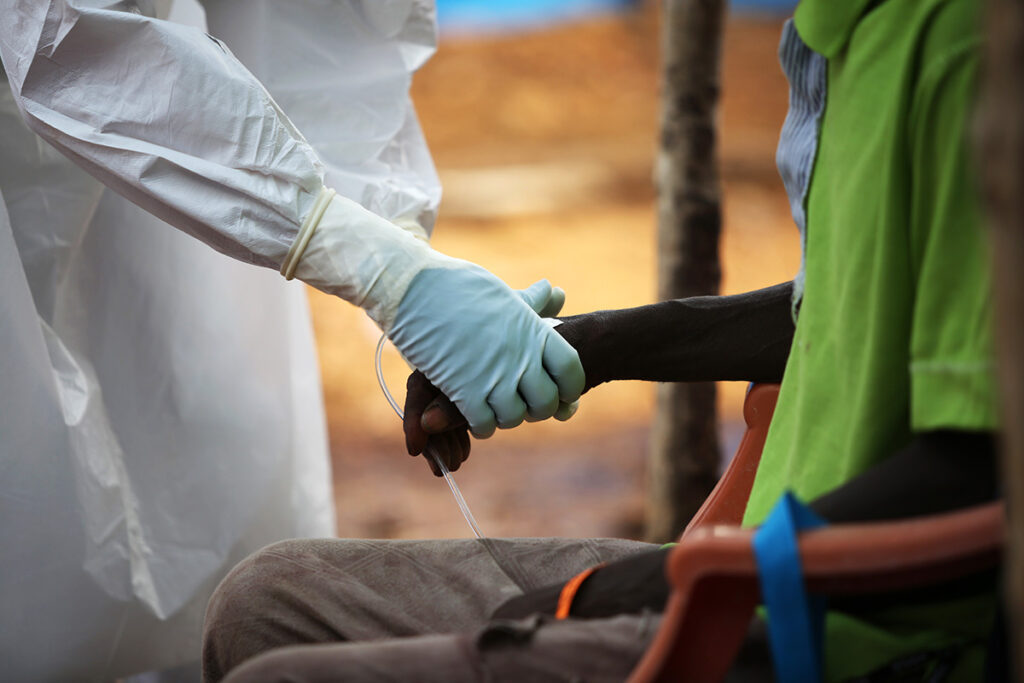
Can you update us on Ibrahim, Yabom, and the rest of the survivor community you feature in the book?
They are all still working with us. And one of the things that happened with the survivors’ program was that fellow Ebola survivors became close friends. Today they still constitute a community—not just a collective working to improve the care that people who survived Ebola are receiving, but also as a social collective able to confront other problems, like COVID-19.
I believe that the greatest problems faced by the people we’re calling survivors are material problems: housing, jobs, food, insurance. They say, “I need a phone, I need a laptop, I need to go to school, my kids need to go to school, I want to go to university.” So we really have to keep asking hard questions about inequality: how it’s sustained, how it can be addressed. And that’s not going to go away in Sierra Leone or the United States without sustained and passionate commitment to health equity.
You didn’t know that this book, about a historic epidemic, would be published during a historic pandemic. How do you think this moment can perhaps benefit from the book?
When things like COVID-19 come along, people are suddenly more aware of the fragility of our grasp on flourishing. So the solutions that are proposed in this book, which include such concepts as health system strengthening, building safety nets, and building out insurance for unemployment, catastrophic illness, and funerals—all of that can be viewed through the lens of COVID, too.
Our work, which is around health system strengthening and all of what I just mentioned, never enjoys adequate financial support. A book like this isn’t going to generate the resources. But if it generates the understanding that leads to corrective investments, that would be a great thing to have contributed to.
Was writing this book cathartic?
Yes, it was. It wasn’t just catharsis, as in, “I’d like to exorcise some of these terrible images and thoughts from my mind and maybe writing about them will help.” It was also getting to know the other side of these individuals, whom I’d known as patients, as fully fleshed-out people with joys and victories as well as losses. And getting to know Sierra Leone, which I’d seen as a battle zone between a virus and poverty and people. You don’t want to go away from a place and a people with only grim and gory stories. You want to understand the rest of their experience, too.
Article originally published on pih.org
Read an excerpt from Fevers, Feuds, and Diamonds by Dr. Paul Farmer here.
